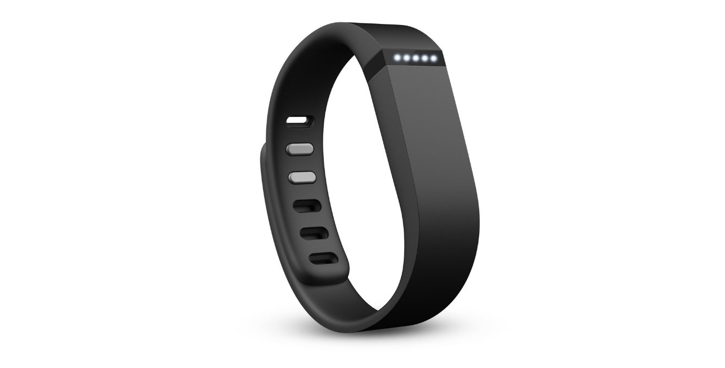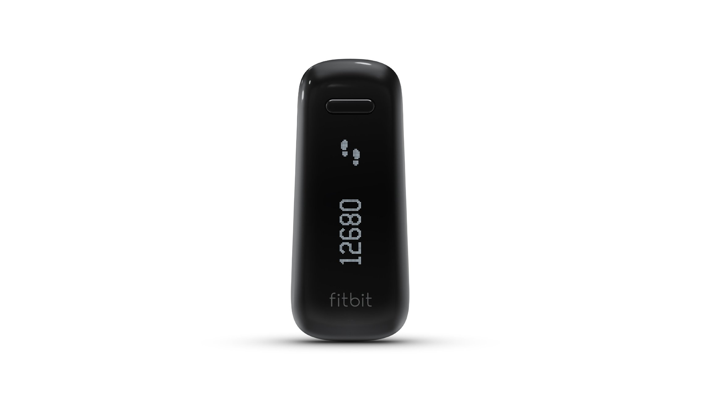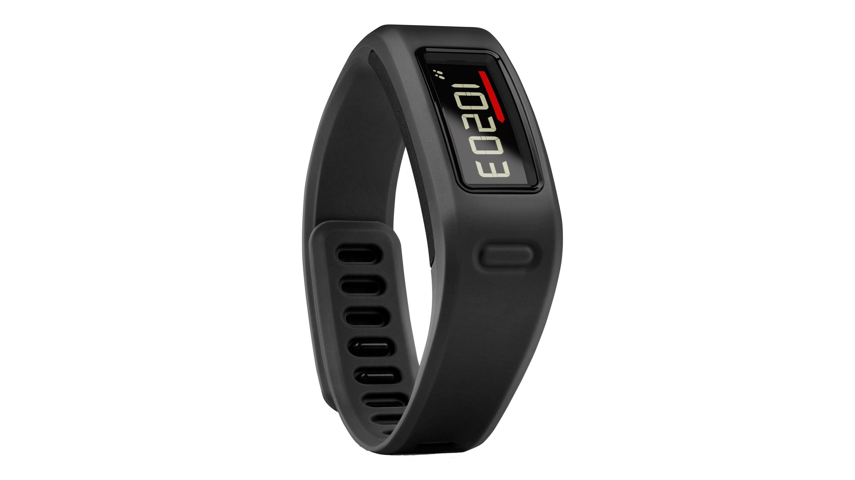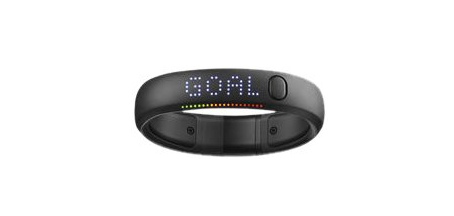Top 5 Fitness Trackers for Counting Steps and More
Jan 16, 2015
Wearable fitness moves beyond the latest moisture-wick materials and fancy water bottles; today, it’s all about which gadgets calculate your daily steps, heart rate, calories burned, and how many hours of ZZZs you got. These handy portable electronics, most worn on your person or wrist, have taken the marketplace by storm. Despite being a fun way to gently compete with your friends (most allow you to have a virtual competition in steps), these devices can be a valuable way to keep track of your progress on the journey toward a healthier you. We’ve rounded up five of the most popular fitness trackers today to give you a rundown on the tech that may work for you. Don’t forget, now through January 31, we’re giving away one FitBit Flex per day!
FitBit Flex
www.fitbit.com/flex
 The FitBit Flex is perhaps the most commonly seen fitness tracker on the market. Now retailing for an average $100, the FitBit flex is a slim and sleek bracelet that uses blinking LED lights to represent your steps and goals. FitBit Flex tracks your activity including total steps, stairs, calories burned, and sleep. It syncs wirelessly with your smartphone and interfaces with health and fitness apps (like Diet to Go!). People love how it’s “very easy to use” and “makes food and exercise fun to track”. The FitBit Flex is water resistant and includes two wrist bands (and fashionistas may like the new Tory Burch designs). FitBit comes in many different colors, perfect for personalizing your fitness sidekick.
The FitBit Flex is perhaps the most commonly seen fitness tracker on the market. Now retailing for an average $100, the FitBit flex is a slim and sleek bracelet that uses blinking LED lights to represent your steps and goals. FitBit Flex tracks your activity including total steps, stairs, calories burned, and sleep. It syncs wirelessly with your smartphone and interfaces with health and fitness apps (like Diet to Go!). People love how it’s “very easy to use” and “makes food and exercise fun to track”. The FitBit Flex is water resistant and includes two wrist bands (and fashionistas may like the new Tory Burch designs). FitBit comes in many different colors, perfect for personalizing your fitness sidekick.FitBit One
www.fitbit.com/one
 Known by some as the first fitness tracker, the FitBit one is a small tracker that clips onto clothing. It has a simple LCD interface that shows number of steps, and can track calories burned, distance traveled, stairs climbed, hours slept, and the quality of your sleep. How does it track your sleep though, if it clips onto your clothes? You can slip the One into the included wristband for comfort throughout the night. All of the stats tracked by One sync with your smartphone into the FitBit app, and the One even syncs with other health and fitness apps like Runkeeper, My Fitness Pal, and Diet to Go. It comes in black or maroon and usually retails around $99.99.
Known by some as the first fitness tracker, the FitBit one is a small tracker that clips onto clothing. It has a simple LCD interface that shows number of steps, and can track calories burned, distance traveled, stairs climbed, hours slept, and the quality of your sleep. How does it track your sleep though, if it clips onto your clothes? You can slip the One into the included wristband for comfort throughout the night. All of the stats tracked by One sync with your smartphone into the FitBit app, and the One even syncs with other health and fitness apps like Runkeeper, My Fitness Pal, and Diet to Go. It comes in black or maroon and usually retails around $99.99.
Jawbone Up24
www.jawbone.com/store
 (Updated: 1/21/15) The Jawbone Up24 is a bracelet style fitness tracker that counts steps, tracks calories burned, tracks sleep, buzzes when you’ve been idle too long, and syncs with the UP iPhone app. Fans of the Up24 rave most about its sleep tracking abilities; Up24 wakes you up at the ideal time in your sleep cycle with a gentle vibration rather than a jarring alarm. The Up24 is splash resistant (just don't submerge it), but should handle a little moisture from doing the dishes or watering the flowers. Up24 is available in six colors, has a battery life of up to 14 days, and is available for around $129.99.
(Updated: 1/21/15) The Jawbone Up24 is a bracelet style fitness tracker that counts steps, tracks calories burned, tracks sleep, buzzes when you’ve been idle too long, and syncs with the UP iPhone app. Fans of the Up24 rave most about its sleep tracking abilities; Up24 wakes you up at the ideal time in your sleep cycle with a gentle vibration rather than a jarring alarm. The Up24 is splash resistant (just don't submerge it), but should handle a little moisture from doing the dishes or watering the flowers. Up24 is available in six colors, has a battery life of up to 14 days, and is available for around $129.99.
Garmin VivoFit
sites.garmin.com
 The Garmin VivoFit is also a wrist style tracker, with a display screen that shows total steps, calories burned, distance traveled, time, and unlike FitBit and Jawbone, your estimated heart rate (with optional heart rate monitor). People love the long battery life of the VivoFit (up to a whole year), and the activity timer, which alerts you when you’ve been motionless for too long. However, some reviewers note that the design feels “bulky” in comparison to other fitness trackers (something has to house that better and likely bigger battery!). Like the other trackers on the market, VivoFit syncs with smartphones and has an independent app for keeping tabs on your stats. Garmin is now manufacturing the VivoFit 2, available for $129.99 in black, white, navy, and pink.
The Garmin VivoFit is also a wrist style tracker, with a display screen that shows total steps, calories burned, distance traveled, time, and unlike FitBit and Jawbone, your estimated heart rate (with optional heart rate monitor). People love the long battery life of the VivoFit (up to a whole year), and the activity timer, which alerts you when you’ve been motionless for too long. However, some reviewers note that the design feels “bulky” in comparison to other fitness trackers (something has to house that better and likely bigger battery!). Like the other trackers on the market, VivoFit syncs with smartphones and has an independent app for keeping tabs on your stats. Garmin is now manufacturing the VivoFit 2, available for $129.99 in black, white, navy, and pink.
Nike FuelBand
store.nike.com
 Nike FuelBand is also a wrist style tracker, with an LED display screen that tracks how often and how intensely you move. FuelBand tracks movement like steps and calories burned, but some people ding it for the lack of sleep tracking. People love the ability to create “sessions”, that is, the tracking of Fuel points earned during a specific activity, and that the numbers and stats are displayed directly on the tracker. FuelBand is available in four neon colors, and is available for about $99.
Nike FuelBand is also a wrist style tracker, with an LED display screen that tracks how often and how intensely you move. FuelBand tracks movement like steps and calories burned, but some people ding it for the lack of sleep tracking. People love the ability to create “sessions”, that is, the tracking of Fuel points earned during a specific activity, and that the numbers and stats are displayed directly on the tracker. FuelBand is available in four neon colors, and is available for about $99.
There are many more fitness trackers not listed here, though most have similar features and interfaces. To get a feel for what tracker might be for you, visit a store like Best Buy to check them out in person. What feels just right for one person may be too bulky for you, or maybe you have to have a heart rate monitor. The key to wearable tech is finding something that fits into your daily routine; not something that feels like one more “to do” to squeeze into your day. If you have a fitness tracker, what kind are you using? If you don’t have one, would any of these fit the bill?

Author: Alyssa Curran
Alyssa Curran does social media by day and tweets pictures of her cats and food by night. When she’s not hanging out on social media, she’s writing on the Double Chin Diary, buying nail polish, or perpetually trying to get in shape.
Follow Alyssa @lyssacurran or @doublechindiary, or on Facebook here.









